A unified approach to model peripheral nerves across different animal species
- PMID: 29142788
- PMCID: PMC5683050
- DOI: 10.7717/peerj.4005
A unified approach to model peripheral nerves across different animal species
Abstract
Peripheral nerves are extremely complex biological structures. The knowledge of their response to stretch is crucial to better understand physiological and pathological states (e.g., due to overstretch). Since their mechanical response is deterministically related to the nature of the external stimuli, theoretical and computational tools were used to investigate their behaviour. In this work, a Yeoh-like polynomial strain energy function was used to reproduce the response of in vitro porcine nerve. Moreover, this approach was applied to different nervous structures coming from different animal species (rabbit, lobster, Aplysia) and tested for different amount of stretch (up to extreme ones). Starting from this theoretical background, in silico models of both porcine nerves and cerebro-abdominal connective of Aplysia were built to reproduce experimental data (R2 > 0.9). Finally, bi-dimensional in silico models were provided to reduce computational time of more than 90% with respect to the performances of fully three-dimensional models.
Keywords: Computational models; Finite Element Models; Peripheral nerves; Yeoh-like strain energy function.
Conflict of interest statement
The authors declare there are no competing interests.
Figures

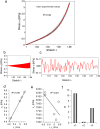
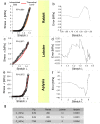
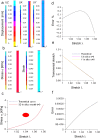
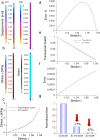
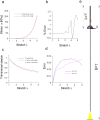

Similar articles
-
Fast in silico assessment of physical stress for peripheral nerves.Med Biol Eng Comput. 2018 Sep;56(9):1541-1551. doi: 10.1007/s11517-018-1794-3. Epub 2018 Feb 12. Med Biol Eng Comput. 2018. PMID: 29430594
-
Strain stiffening of peripheral nerves subjected to longitudinal extensions in vitro.Med Eng Phys. 2020 Feb;76:47-55. doi: 10.1016/j.medengphy.2019.10.012. Epub 2019 Dec 25. Med Eng Phys. 2020. PMID: 31882395
-
Interactions among biotic and abiotic factors affect the reliability of tungsten microneedles puncturing in vitro and in vivo peripheral nerves: A hybrid computational approach.Mater Sci Eng C Mater Biol Appl. 2016 Feb;59:1089-1099. doi: 10.1016/j.msec.2015.11.022. Epub 2015 Nov 12. Mater Sci Eng C Mater Biol Appl. 2016. PMID: 26652468
-
Computational Biomechanics: In-Silico Tools for the Investigation of Surgical Procedures and Devices.Bioengineering (Basel). 2020 May 30;7(2):48. doi: 10.3390/bioengineering7020048. Bioengineering (Basel). 2020. PMID: 32486216 Free PMC article. Review.
-
Isotropic incompressible hyperelastic models for modelling the mechanical behaviour of biological tissues: a review.Biomed Tech (Berl). 2015 Dec;60(6):577-92. doi: 10.1515/bmt-2014-0146. Biomed Tech (Berl). 2015. PMID: 26087063 Review.
Cited by
-
Some Mechanical Constraints to the Biomimicry with Peripheral Nerves.Biomimetics (Basel). 2023 Nov 13;8(7):544. doi: 10.3390/biomimetics8070544. Biomimetics (Basel). 2023. PMID: 37999185 Free PMC article.
-
Strategies for Peripheral Nerve Repair.Curr Tissue Microenviron Rep. 2020;1(2):49-59. doi: 10.1007/s43152-020-00002-z. Epub 2020 Apr 21. Curr Tissue Microenviron Rep. 2020. PMID: 33381765 Free PMC article. Review.
-
Fast in silico assessment of physical stress for peripheral nerves.Med Biol Eng Comput. 2018 Sep;56(9):1541-1551. doi: 10.1007/s11517-018-1794-3. Epub 2018 Feb 12. Med Biol Eng Comput. 2018. PMID: 29430594
References
-
- Bathe KJ. Finite element procedures. Prentice-Hall; Englewood Cliffs: 1996.
-
- Bergstrom J. Mechanics of solid polymers: theory and computational modelling. Elsevier; San Diego: 2015.
-
- Brink U, Stein E. On some mixed finite element methods for incompressible and nearly incompressible finite elasticity. Computational Mechanics. 1996;19(1):105–119. doi: 10.1007/BF02824849. - DOI
LinkOut - more resources
Full Text Sources
Other Literature Sources
Molecular Biology Databases

